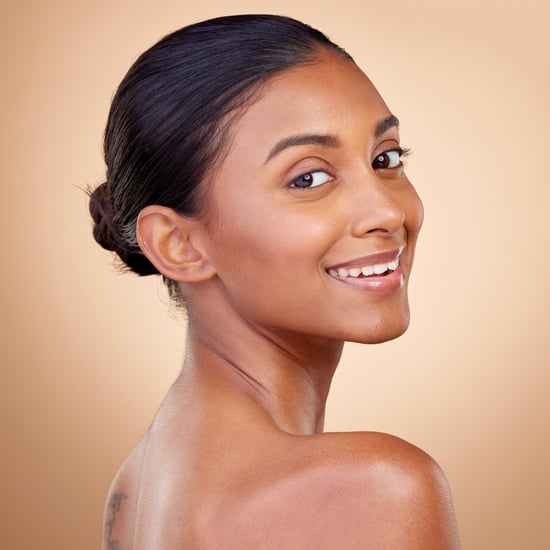What Is Clinical Testing in the Beauty Industry?
Diversity in the Beauty Industry Is Still Only Skin Deep — Here's What Needs to Change

Thanks to a newly wider choice of foundation shades and more diverse campaign models, it would be easy to assume that the beauty industry has finally woken up to issues of inclusivity. But what you might be surprised to hear is that this is often only skin deep. Despite marketing campaigns making bold promises of wonder products, these results are skewed dramatically in favour of white and caucasian skin because there is still major imbalance within clinical testing.
Not all skin tones are created equal. While there are, of course, similarities when it comes to dryness, dehydration, and pigmentation changes, there are a number of disparities that need to be properly explored. Yet there remains a wide diversity gap within the skincare industry: cosmetic products are often not tested on people of colour.
Take, for example, this 2020 review of "130 publications relating to manifestations of Covid-19 on the skin". A huge 92 percent of images showed fair tones, with no images of darker tones.
This shortcoming is not only evident in studies, but amongst the experts who are equally disproportioned to challenge this research. "Dermatology is one of the least diverse medical specialities. Only three percent of dermatologists in America specifically are Black, even though 12.8 percent of the population are African American. Again, 4.2 percent of dermatologists are Hispanic compared to 16.3 percent of the general population," dermatologist Sharad Paul, MD, tells POPSUGAR.
The same issues are occurring this side of the pond. London-based medical student Malone Mukwende has created a handbook called "Mind the Gap" after feeling frustrated that he only studied conditions on white skin. The book contains images and descriptions for fellow medical students, allowing them to study the clinical signs and symptoms on all skin colours.
While more companies are striving for equality, diversity is so much more than a box-ticking exercise. Representation on all fronts is paramount, and not just in the surface-level images and shades seen by the consumer. Here, industry experts weigh in on why diverse clinical testing is crucial and what can be done to change the current landscape.
What Is Clinical Testing?
"Clinical testing or clinical trials are performed in the beauty industry for a variety of reasons, from testing the claims of a product to efficacy," Ejiro Owusu, skin specialist and founder of Ejiro Studio, tells POPSUGAR. "Brands do this to provide consumers with vital information that can support the results and benefits of that product. This is a great way for brands to build trust and loyalty amongst their audience."
Why Is Skin Representation Important in the Beauty Industry?
Simply put, "If the products or ingredients haven't been tested on skin of colour, we have no way of knowing if those products will work successfully or not," says Dija Ayodele, author of "Black Skin" and founder of Black Skin Directory and West Room Aesthetics. Take hidradenitis suppurativa (HS), a chronic inflammatory condition highly prevalent in Black skin. A study on the condition evaluated 47,690 patients over 12 years. While 68 percent of participants were white, only 14 percent were of African descent. This disproportionately affected the results.
Or consider skin conditions such as acne, eczema, keloid scarring, alopecia, and dermatitis (to name a few). Due to the rich melanin in darker skin, conditions such as these are likely to cause hyperpigmentation due to the increased production of melanocytes in the skin. "There are differences in structure and skin functions between all racial groups that have to be accounted for," Owusu says. This means that the products claiming to target and heal hyperpigmentation may not have been tested on darker skin.
"As a practitioner, you want to be confident about the products, treatments, and ingredients that will work for the client sat in front of you," Ayodele says. "Whether English rose or dark Sudanese, you want that certainty, and without the clinical testing, you don't know how that particular product will interact with someone's skin."
With more conclusive research, shoppers can make confident decisions regarding the health of their skin and bodies. "You want to feel considered, and you want to know that these products or ingredients may not be for your skin, and at least you know it can be grounded in fact and science," Ayodele says. From a consumer standpoint, it comes back to feeling seen and trusting the brands you prioritise in your routine. "Why should you be loyal or trust a brand if they do not even see you as a viable enough customer to have been considered when testing their product?" says Tijion Esho, MD, founder of skincare brand Esho.
Why Is There an Inequality With Clinical Testing?
Racial injustice has run rampant within many industries throughout modern history, not just the beauty sector. These date back to colonisation and people of colour being considered secondary, but the long-term repercussions have seen cognitive biases contributing to a lack of representation and understanding within medical and cosmetic testing. "As a group, we are often ignored despite being one of the highest groups of spenders when it comes to beauty," Dr Esho says.
As a result, there has been a lack of trust placed on the science industry by people of colour. Memories of Tuskegee, where hundreds of Black men were experimented on under false pretenses, or the mistreatment of Henrietta Lack, who received unethical healthcare, mean many carry the anxiety of ill diagnosis.
With the industry taking its time to correct such traumatic mistakes, fear has been able to breed over the years. "Fear of treatment exists, and rather than addressing those fears and misconceptions, it was easier for many brands to ignore it, leading to the lack of visibility and representation," Dr Esho says.
How Can Brands Become More Inclusive?
Many factors are at play to help navigate a more inclusive path between communities, companies, and brands. "Companies need to do extensive outreach with local communities, churches, or even barbershops. If lacking sufficiency, there will be a lack of representation," Ayodele says. Brands need to be proactive and stop waiting for people of colour to highlight their lack of representation.
Owusu believes BIPOC communities also need to meet companies halfway. "We should be putting ourselves forward to test products for these brands and asking brands for their clinical testing results," she states.
There are a number of great platforms that advocate for this. The Centre of Evidence Based Dermatology conducts independent research to prevent diseases. Similarly, London Trials and Be Part of Research offer databases to help locate local research centres conducting trials that the public can sign up to.
"More representation will mean a better problem-solving and efficacious product range," concludes Dr Paul. The change doesn't just start with how many skin tones are reflected in a marketing campaign or how many influencers are brought on board to launch a product: the change is rooted in clinical foundations and actively testing products on all skin tones to ensure efficacy for all.


